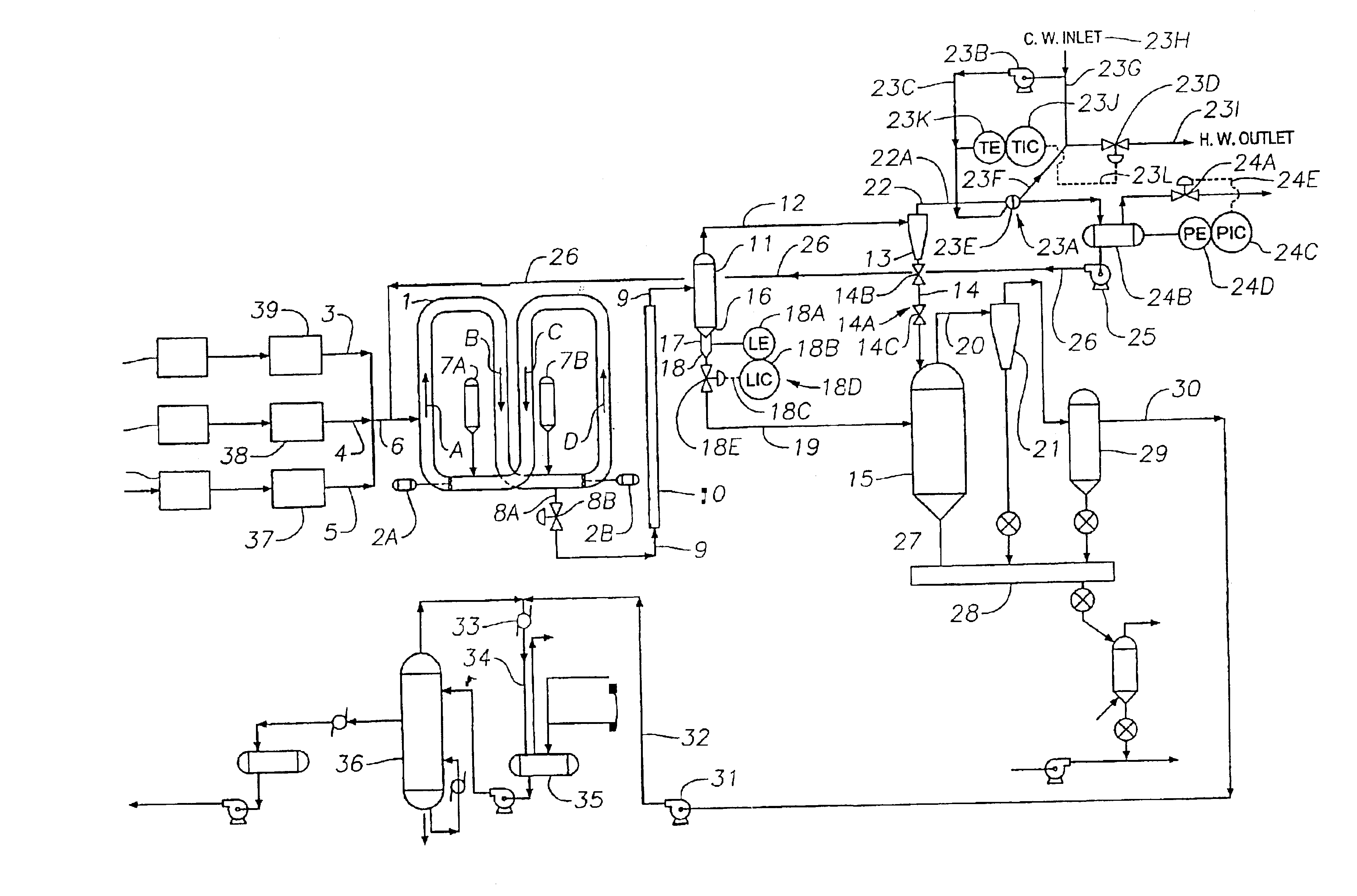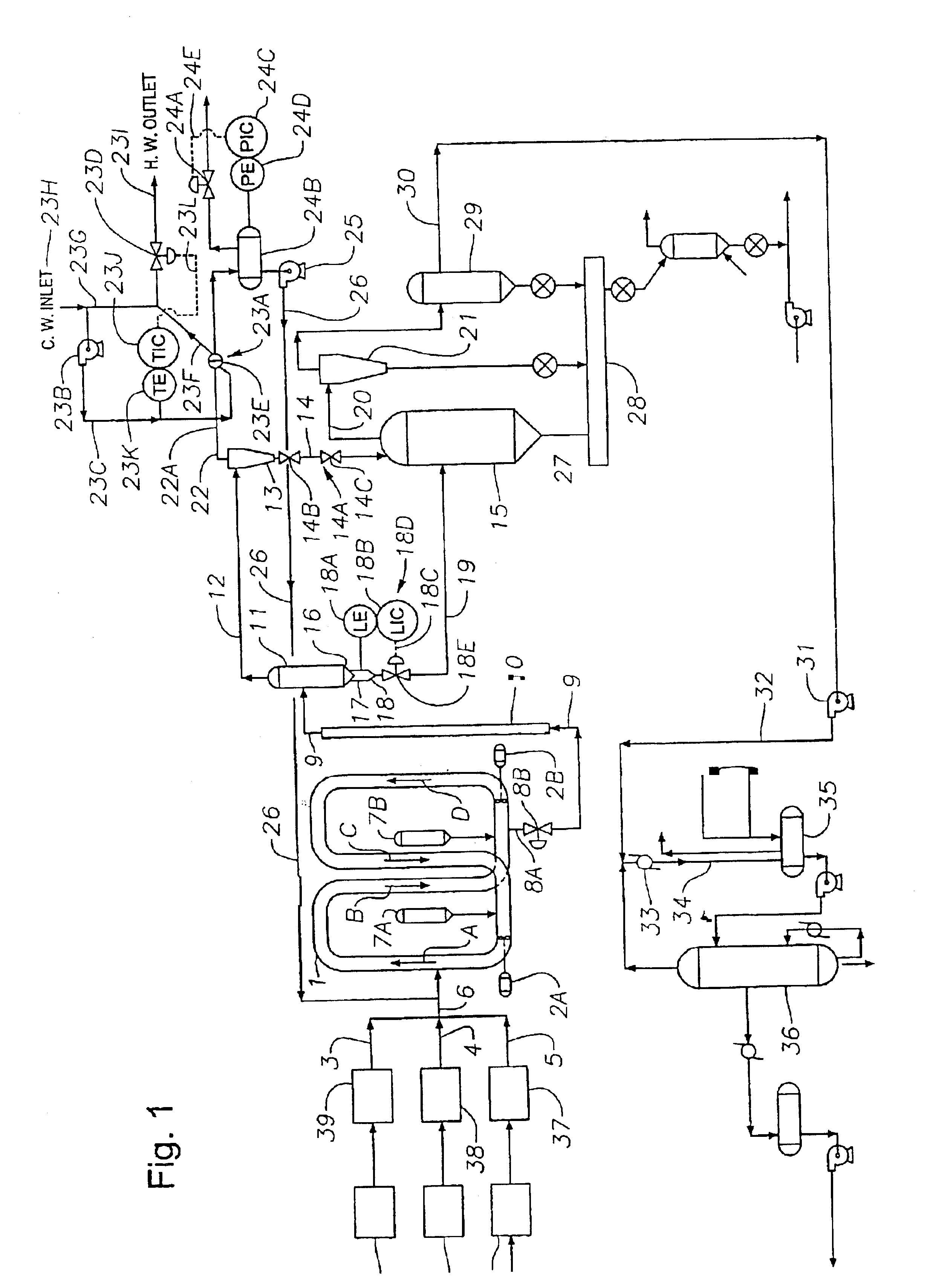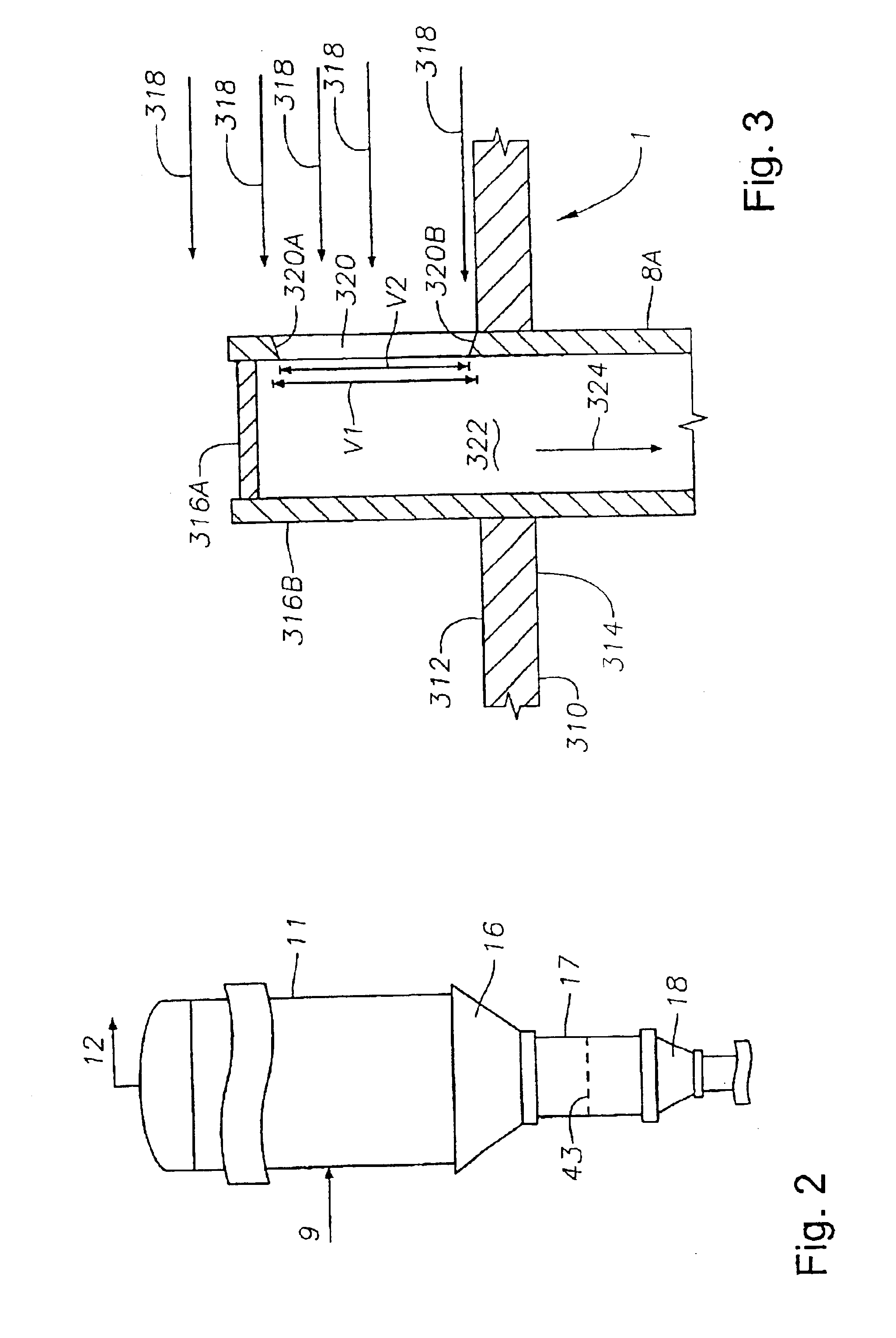Continuous slurry polymerization volatile removal
- Summary
- Abstract
- Description
- Claims
- Application Information
AI Technical Summary
Benefits of technology
Problems solved by technology
Method used
Image
Examples
example 1
A typical ethylene polymerization process can be conducted at a temperature of about 215° F. and a pressure of 565 psia. An example of such a process would result in a polymerization effluent of about 83,000 pounds per hour comprising about 45,000 pounds per hour of polyethylene polymer solids and about 38,000 pounds per hour of isobutane and unreacted monomers. The continuously discharged polymerization effluent is flashed in the first flash tank at a pressure of about 240 psia and a temperature of about 180° F. to remove overhead about 35,000 pounds per hour of diluent and unreacted monomer vapors and entrained particulates. Auxiliary heat to impart an additional quantity of heat to the polymerization effluent is supplied by appropriate heating means during the transit between the discharge valve and the first flash tank. After removal of the fines, the isobutane vapor is condensed, without compression, by heat exchange at a pressure of about 240 psia and a temperature of about 13...
example 2
A typical ethylene polymerization process can additionally be conducted at a temperature of about 215° F. and a pressure of 565 psia. An example of such a process would result in a polymerization effluent of about 83,000 pounds per hour comprising about 45,000 pounds per hour of polyethylene polymer solids and about 38,000 pounds per hour of isobutane and unreacted monomers. The continuously discharged polymerization effluent is flashed in the first flash tank at a pressure of about 240 psia and a temperature of about 175° F. to remove overhead about 23,000 pounds per hour of diluent and unreacted monomer vapors and entrained particulates. After removal of the fines, the isobutane vapor is condensed, without compression, by heat exchange at a pressure of about 240 psia and a temperature of about 112° F. The polymer slurry / solids discharging from the bottom of the first flash tank into the seal chamber form a continuous plug flow of concentrated polymer slurry / solids, which provides ...
example 3
An example of a typical ethylene polymerization process was carried out in an eight leg, 20 inch reactor with settling legs having an overall length of 833 ft and a volume of 11,500 gallons. The reactor was equipped with a single flash tank (requiring 100% compression of all diluent discharged from the reactor), a single 460-480 kilowatt circulating pump having a pump head in the range from 85 ft to 110 ft, producing a circulation rate in the range from 21,000 to 28,000 gallons per minute (gpm) and operated in a discontinuous discharge mode. The polymerization temperature and pressure in the reactor would be between about 215° F. to 218° F. and a pressure of 565 psia.
In the process of example 3, the reactor slurry density is in the range from 0.555 gm / cc to 0.565 gm / cc, a polymer production rate range from 28,000 pounds to 31,000 pounds per hour while maintaining a reactor solids concentration weight percentage in the range from 46 to 48 with a polymer residence time in the range fr...
PUM
| Property | Measurement | Unit |
|---|---|---|
| Fraction | aaaaa | aaaaa |
| Weight | aaaaa | aaaaa |
| Pressure | aaaaa | aaaaa |
Abstract
Description
Claims
Application Information
 Login to View More
Login to View More - R&D
- Intellectual Property
- Life Sciences
- Materials
- Tech Scout
- Unparalleled Data Quality
- Higher Quality Content
- 60% Fewer Hallucinations
Browse by: Latest US Patents, China's latest patents, Technical Efficacy Thesaurus, Application Domain, Technology Topic, Popular Technical Reports.
© 2025 PatSnap. All rights reserved.Legal|Privacy policy|Modern Slavery Act Transparency Statement|Sitemap|About US| Contact US: help@patsnap.com



